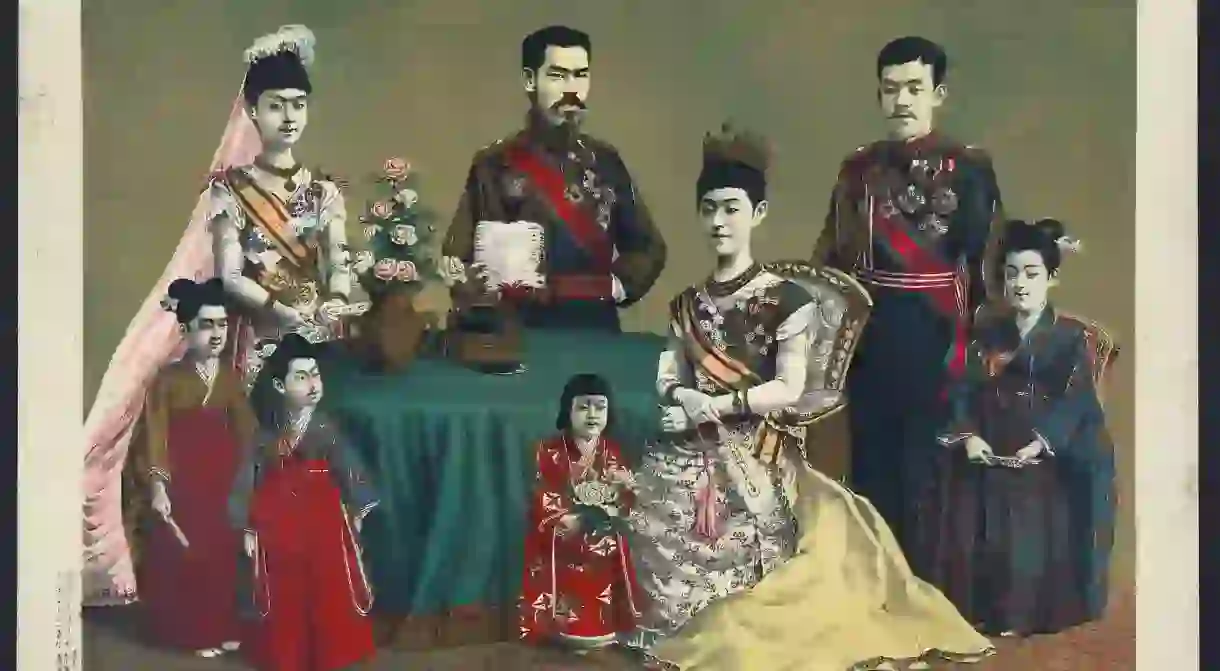A Brief History of the Japanese Imperial Family

With origins dating back thousands of years, the Imperial Family of Japan is the world’s oldest continuous hereditary monarchy. According to the Constitution, the Emperor serves as the “symbol of the State and of the unity of the people” of Japan, while other members of the royal family engage more in civic duties and social events. We take a look at the rich history of the royal family and the recent controversy regarding the future of the throne.
Legendary Origins
According to Japanese mythology, the first emperor of Japan, Jimmu, was a descendant of the sun goddess Amaterasu and the storm god Susanoo, two hugely important figures in the Shinto religion. Ancient Japanese texts state that Jimmu ascended to the throne in the year 660 BC; since his reign, the royal hereditary line is said to have remained unbroken. While there is little historical evidence to support the verity of the ancient royal family tree, there is substantial evidence of the last 1,500 years of the hereditary line, beginning with Emperor Kinmei who ruled from years 539 to 571. From the reign of Kinmei to the current emperor, Akihito, the throne has been continuously succeeded by the next male heir in line.

The current royal family
At the top of the Imperial Family are Emperor Akihito and Empress Michiko. Their eldest son, Crown Prince Naruhito, is expected to assume the role of Emperor after his father. He and his wife, Crown Princess Masako, currently have one daughter, Princess Toshi. All other children and grandchildren of the Emperor and Empress carry the title of Prince or Princess. There are currently nineteen members of the Imperial Family.
Controversy and the future of the throne
The Imperial law makes it illegal for the emperor to abdicate the throne, however, at age 83, Emperor Akihito has stated publicly that he is concerned his age will soon interfere with his duties. In May of this year, the Japanese government approved a one-time bill allowing Akihito to resign from his position in December 2018, after which the throne would be succeeded by Crown Prince Naruhito.
This poses potential problems for the historically all-male line; because Naruhito and his wife have no male children, the only remaining options after him are his brother, Prince Akishino, and his brother’s only son, 10-year-old Prince Hisahito. Put simply, after Naruhito and Akishino (both in their 50’s) pass, the fate of the royal family line will rest solely on young Hisahito; if Hisahito does not marry and produce a male child, the traditionally all-male line will be broken.














